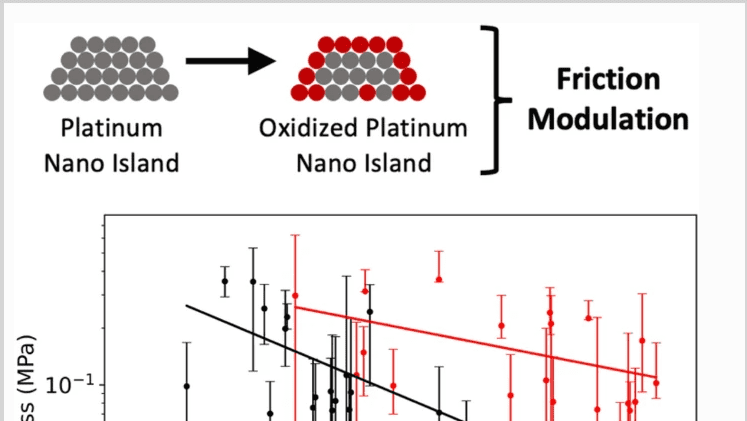
- Research
- Publication
Published:
Influence of Interfacial Oxidation on Friction in Structural Superlubricity
We present the results of friction experiments performed by manipulation of oxidized platinum nanoislands on highly oriented pyrolytic graphite (HOPG) substrates through atomic force microscopy (AFM). The oxidation of the platinum nanoislands, performed via mild plasma exposure, is confirmed through X-ray photoelectron spectroscopy (XPS) and high-resolution energy-dispersive X-ray spectroscopy (EDX), the latter of which reveals partial oxidation on the sliding surfaces of the nanoislands. Oxidized platinum nanoislands are found to exhibit higher friction than non-oxidized islands, with a ~ 70% increase in mean shear stress over the investigated contact size regime. An increase in chemical interaction forces between the oxidized platinum and the graphite substrate is proposed to explain the increase in friction forces. Our results reveal that alteration of interfacial chemistry through oxidation leads to a noticeable modulation of friction forces, but not a total breakdown of the superlubric state (as evidenced by the signature observation of decreasing shear stress with increasing contact size), providing further feasibility for the design of superlubric mechanical systems to be operated under ambient conditions.
Publication
A. Özoğul, B. R. Jany, F. Krok, E. Gnecco, M. Z. Baykara, "Influence of interfacial oxidation on friction in structural superlubricity": Tribology Letters,